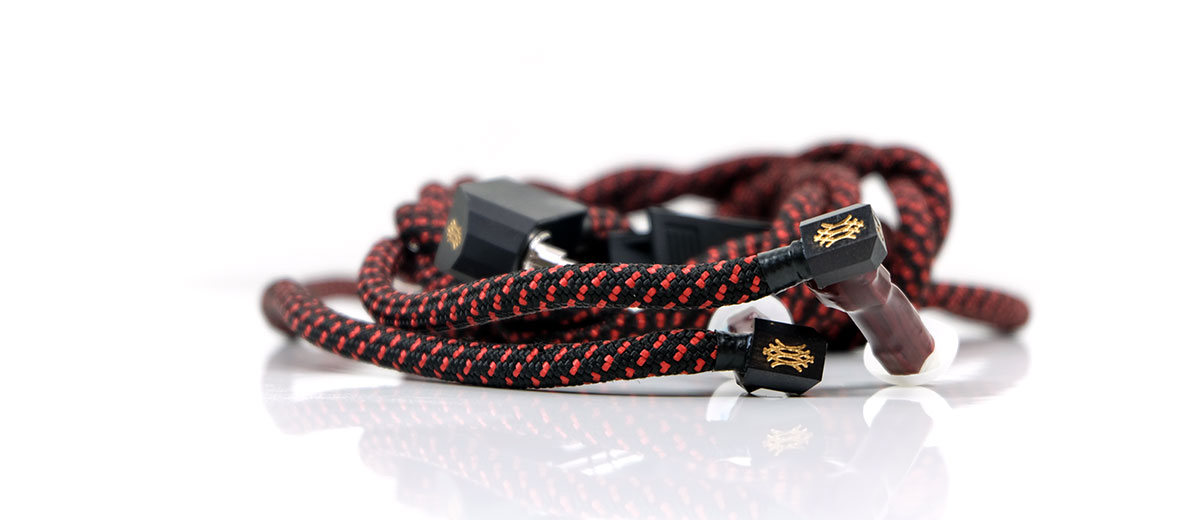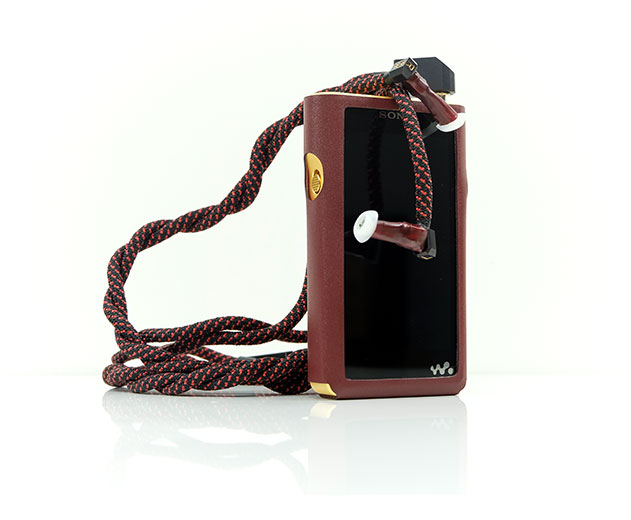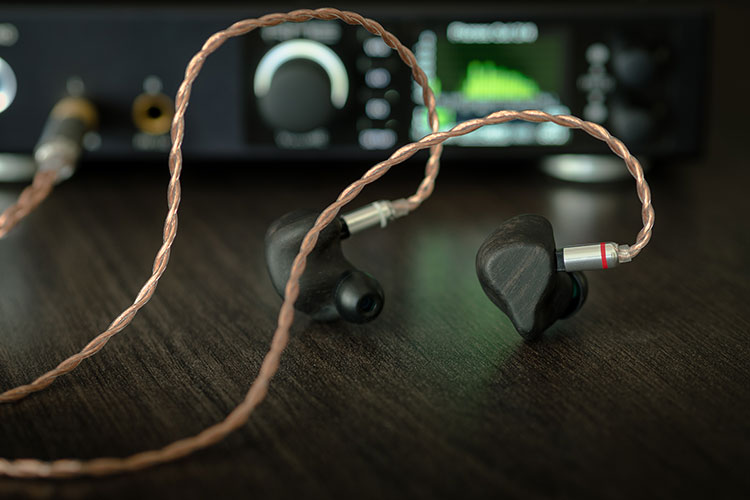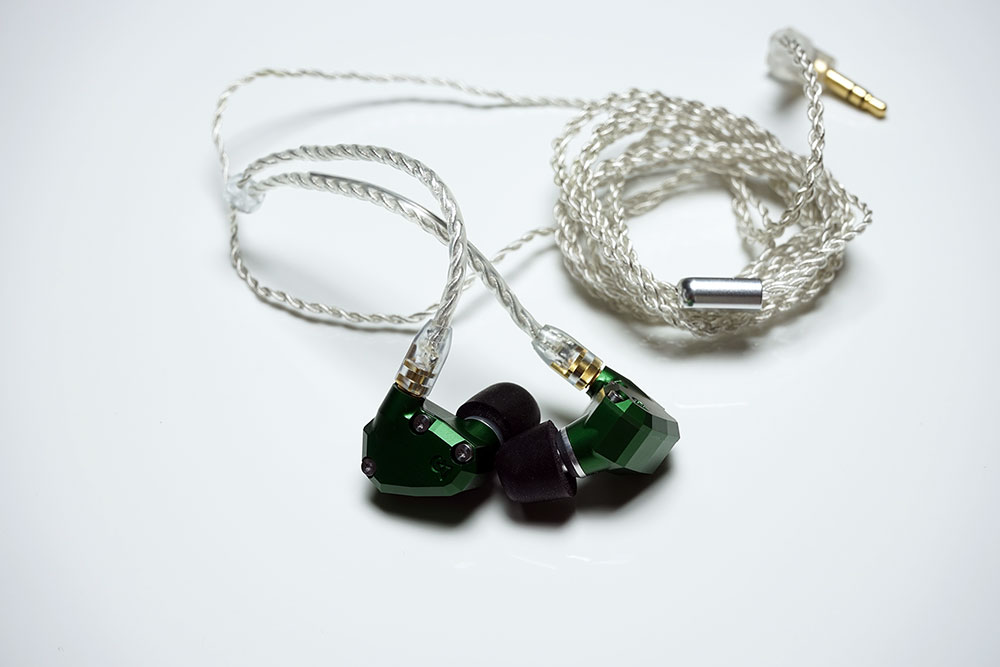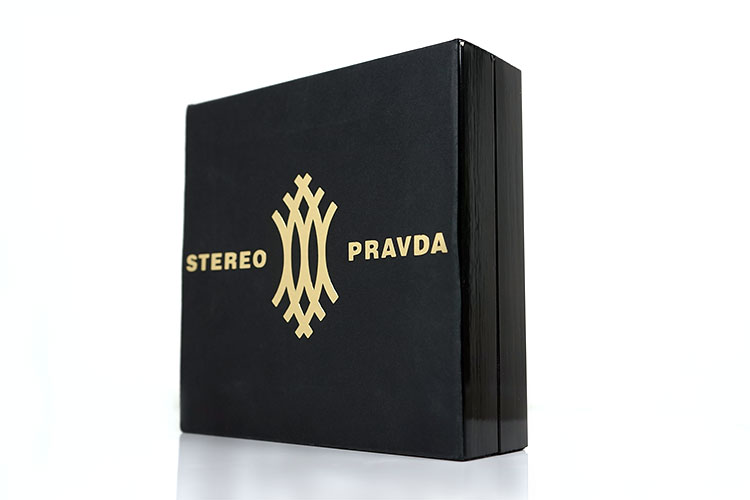Sound Impressions
Summary
The SB-5 is fairly mid-centric and a stunning vocal specialist. This is primarily an n-shaped frequency response in the same manner as the SB-7 but with slightly less treble elevation and a greater focus on upper mid-range presence.
The SB-5 experience is thus a more intimate listening experience than the grandiose-sounding SB-7. Contextually, it is also slightly more organic than the older sibling’s neutral and transparent tone.
It delivers a razor-flat and very linear low-end from 40Hz-1k and then a pronounced boost from 1-5k that brings a vocal presence to the fore.
The SB-5 only shows a marginal if slight nudge downwards from 3-4k compared to the SB-7 which has a more pronounced 4-5k dip. The SB-5 also has a more restrained treble presence compared to the SB-7’s more lively and extended treble signature.
From 5-10k both have similar peaks, however, it is the SB-7 peaks that are more prominent and extend up to 10k and beyond. Thus, the SB-7 will be viewed as more spacious and open sounding with a bit more air and a grander presentation than the SB-5.
However, the SB-5 is the mellower, slightly smoother presentation, and will make the SB-7 sound the brighter of the two albeit slightly less detailed by comparison.
Staging
The SB-5 staging is not quite as expansive as the SB-7 but still fairly open-sounding and lacking in any congestion. That being said this is all degrees of context because the SB-7 really did cast a fairly grand and spacious soundstage with excellent top-end extension.
The SB-5 pulls back a little on either end of its soundstage with that midrange hump pushing vocals much further forward. However, it still sounds very open with excellent instrumental separation and imaging accuracy.
Instruments will be perceived a little further behind the vocals but in reality, they retain a neutral positioning rather than sound recessed or diffuse in their imaging.
Misha has been careful not to rob the SB-5 of air in his more controlled tuning of the treble. A characteristic that allows the intimate vocal positioning to breathe whilst taking center stage at the same time.
Bass
If anything, the low-end is even more impressive on the SB-5 than the SB-7. The SB-7 ‘s low-end rolls off just a shade earlier than the SB-5 at around 80Hz compared to 40Hz though both have an incredibly linear response right up to 1k.
The roll-off dB incremental between the two is fairly negligible as both still lack a fair amount of sub-bass prowess. Note body is thus fairly neutral and not overly wet sounding as you would expect from such a linear response.
However, unlike traditional bass light BA designs, the sense of depth is not lost. The SB-5’s extension is excellent and the level of detail does shine through immensely well. This is more typical of a well-tuned BA signature with an emphasis on accuracy, speed, and a very well-defined but tight-sounding bass performance.
Timbre
The SB-5 response does lift a little earlier at around 1k compared to the SB-7 which stays flat almost to 2k. That will reflect in some of the low to midrange instrumental timbre which will show a tinge of warmth and fullness compared to the more neutral sound on the SB-7.
Instrumental positioning will feel just that bit marginally further forward on the SB-5, though by industry standards this is a nuanced comparison. You will not find any meaty aggressive lower-mids on the SB-5 such as you find on monitors such as the Empire Ears Phantom or to a lesser extent the older CA Vega.
Voicing
Voicing on the SB-5 is just superb. I had remarked before on the SB-7 that the entire midrange performance was “magical” and to some extent, this is the same also on the SB-5 but this time it narrows its focus a bit more on perfecting its vocal delivery.
The earlier elevation from 1k is welcome for lower-pitched male vocals which have a bit more body and sound a touch more forward now. At the same time, upper mids retain a bit more energy and presence from 2-5k so upper-pitch vocals sound equally engaging.
Female Vocals
And to be honest, it is female vocals that just sound such a treat with the SB-5, especially when you strip down the instrumental arrangements to the bare minimum. Here is where the SB-5 comes into its own and why I call it the vocal specialist.
Playing intricate but sparse tracks such as Eva Cassidy’s “People Get Ready” really shows off the focus of the SB-5 mids. You will be hard-pushed to get a sharp vocal performance from the SB-5 unless the track itself is inherently sibilant.
And despite its forwardness, it never comes across as shouty or edgy. It is a wonderfully balanced timbre and the true heart of the SB-5.
Treble
I never found the SB-7 too bright. Unforgiving possibly and most definitely very transparent but not harsh. The SB-5 softens that stance a little with its slightly attenuated and smoother treble performance.
This is a nuanced treble tuning because whilst I could say it is not as extended it is not a top-end lacking in air or a feeling of being walled-in. Just a shade off the sparkle in exchange for a little more lower treble body and percussive energy.
The response curve reflects that with a more sustained upper mids and lower treble peak from 2-5k compared to the SB-7 but much less treble presence from 5-10k.
It does roll off a little faster to the 10k marker but still has a little “hi-fi” nudge at 10k. The lasting effect is a little less odd-harmonic presence in the upper mids instrumental timbre so it remains energetic and clear but not overly sharp and piercing.
Synergy
Efficiency
As with the SB-7, the SB-5 only has an official rating of 15Ω but this time around Misha had some 3rd party testing and got us a spec of 115dB for the sensitivity rating. In real-world testing, those numbers do not seem too far off. Overall, you should not have any issues driving the SB-5 out of a fairly resolving and decently powered DAP.
Using an AK240 single-ended output source the SB-5 was marginally quieter than the 5-BA Inear Stagediver SD-5 which is rated at 120dB. The SB-5 is also easier to drive and gets louder faster than the oBravo EAMT-2c which is rated at a similar 16Ω but just 105dB sensitivity.
The SB-5 is much less efficient sounding (up to 10-15dB volume adjustment) when compared to the Campfire Andromeda which is also rated at 115 dB. Mind you the Andromeda is a little easier to drive at 12.5Ω but is the most sensitive IEM I have ever come across.
Noise
The SB-5 will not pick up noise in much the same manner as the Andromeda and SE846. You can only hear the slightest of noise floors on the two FiiO DAPs, X5iii and X3iii if you are determined enough.
The iFi Audio xDSD could be a no-go with the SB-5 without an IEMatch cable. Not sure if just my unit but it does have a little bit of hum rather than hiss as background noise. With the IEMatch the SB-5 was as quiet as a church mouse.
DAPs that played with a nice black background did include the budget-level FiiO M7, Cayin N5ii, AK240/380, and the Sony WM1Z. The DX150 did very well also with the amp 6 card. Quiet portable amps of note that paired well with the SB-5 include the FiiO Q5 and the Chord Hugo 2.
Select Comparisons
oBravo EAMT-2C
£2,899
Technical
The EAMT-2C is a little more expensive than the SB-5, possibly close to the SB-7 but is a potential alternative to those shopping boutique monitors.
This is a semi-open hybrid design consisting of a single 12mm dynamic driver and an AMT Mark 1 super tweeter. It is rated at 16Ω and 105dB and it is not quite as efficient and sensitive as the SB-5. In our sources tests the EAMT-2c needs a bit more gain than the SB-5 to volume match.
The form factor of the oBravo is a little higher end in wood and shell finishing though the oBravo relies a lot more on the type of tips you use than the SB-5 which is more about depth and positioning in the canal.
The oBravo is a detachable design but uses a proprietary MMCX that makes aftermarket cables hard to acquire. The cable is a bit puny compared to the majestic SB-5 cable.
Low-end
Despite having a dynamic driver and a fairly large one the bass response on the oBravo is not quite as colored or forward-sounding as the Inear and CA offerings. It is a little warmer though than the SB-5 and has far more sub-bass presence. In all a very natural sound and one you come to expect from a dynamic driver.
Critically it adds huge depth than the SB-5’s flatter BA sound signature. You give a little up in terms of speed in return you get a beautiful texture and more power that delivers more authority for rock, EDM, and most modern genres that the SB-5 might perform less well on.
Vocals
Vocals are where they differ in presentation. The SB-5 is much further forward sounding whereas the EAMT-2C, forward as it may be is not quite as focused, slightly more neutral in comparison. I think both have an effortless sound, not too rich in their timbre but very expressive sounding and wonderfully controlled.
Both excel with the likes of Halie Loren and Eva Cassidy’s very pure vocal deliveries though if I am nitpicking the oBravo has a very slightly higher level of sharper partial overtones from its energetic AMT treble driver.
It is not always the case, sometimes it’s the source, sometimes the track but any instrument hitting an upper harmonic order aggressively around the 8-10k will put out a very slightly harder sound than the SB-5, particularly on percussion.
Treble
Treble is more extended and energetic sounding on the EAMT-2c, almost Stax-like in its presentation with a very airy and quick-sounding signature. It can blow a little hot from time to time, particularly with neutral to bright or weaker sources but overall a very open and ‘un-IEM’ like sound.
The SB-5 will sound livelier in its slower treble but tail off a bit sooner from 5-10k and whilst I am still impressed with its air and detail it just falls short of the shimmer and sparkle of the EAMT-2C.
Inear Stagediver 5
€949
Technical
The SD-5 is Inear’s latest monitor offering with a 3-way crossover and 5-BA design in what we call a semi-custom form factor. It is all black, with a detachable 2-pin connector, and comes in a universal design only.
The semi-custom shell design makes it a neat and very comfortable fit though it is quite big. The SB-5 is never going to be able to compete with the Stagediver on comfort levels.
The Stagediver is also more efficient at 13Ω and 120dB and does get louder faster than the SB-5 on the various sources we tested with both including the iBasso DX150, 200, and AK240. It is a little more sensitive to background noise than the SB-5 but much less so than the Andromeda.
Performance
The Stagediver is a U-shaped presentation with a robust and weighted low-end reminiscent of the Andromeda but with just a touch more mid-bass impact and sub-bass aggression. Compared to the almost razer-flat SB-5 the Stagediver is going to sound very colored with tremendous bass and lower-mid body and a more forward-sounding signature.
Mid-timbre is a little warmer, richer in texture, and more even-harmonic biased than the Stagediver. The SB-5 is far more neutral in comparison with a firm eye on accuracy. Not quite as neutral as the SB-7, there is a hint of warmth and slightly more body in the SB-5 but compared with the Stagediver it will sound the leaner of the two.
Vocals on the Stagediver are tilted more to a fuller male vocal tuning though female vocals sound very easy on the ear. There is more than a touch of euphony in the vocal timbre of the Stagediver making it a very smooth sound.
However, there is something just so resolutely clear and accurate with the SB-5 vocals. They are a touch leaner but the resulting pitch and extended upper mids presence energy are more engaging, especially on acoustics and sparser tracks.
The Stagediver treble is a little darker sounding than the SB-5 and not quite as boosted in the upper mids and lower treble. That is not to say the Stagediver is a dark-sounding monitor, far from it. Rather it is not as clean sounding or as airy as the SB-5’s top-end performance.
That being said, you will notice a difference in the body between the two treble responses. The SB-5 has the articulation and energy but its timbral weight is just that bit more neutral or leaner-sounding compared to the Stagediver.
Campfire Andromeda
$1099
Technical
The Andromeda is also rated at 115dB and just 12.5Ω but it is quite possibly the most efficient IEM I have ever heard and much more so than the SB-5.
The SB-5 will be less prone to noise on high noise floor sources and amps whereas the Andromeda will pick up a lot more hiss. Thus, like the SB-7, the SB-5 can work well with dedicated portable amps.
Needless to say comfort and fit are superior to the SB-5 but then every IEM ranged against it will be comfier. The SB-5 is not about consumerist comfort.
The Andromeda is also a detachable traditional form factor IEM with removable tips. The SB-5 is non-detachable and the tips are not easily removed, not without some level of DIY.
Performance
Like the Stagediver, the Andromeda is a u-shaped musical presentation but I think a superior level of tuning with an airier more extended treble response which ups the general levels of clarity and harmonic balance. Compared to the SB-5, this is one heck of a competitive offering but for very different reasons.
Previously I felt Andromeda’s 5-driver design came second to the SB-7’s better 7-driver presentation in terms of detail and mids clarity. Now that we are down to 5 drivers and the slight change in emphasis on the SB-5 the gap is somewhat closer in terms of detail but the tonal differences remain unchanged.
Tonality
The Andromeda has the more impactful and fuller-sounding low-end with more sub and mid-bass emphasis. Thus, even harmonic bias is a little higher in the instrumental timbre producing a richer and fuller sound than the flat and linear sounding SB-5.
The SB-5’s focused midrange and lack of comparative low-end warmth deliver a more open and spacious-sounding midrange with excellent micro-detail retrieval. However, it also means less even harmonic presence, a slightly leaner tuning leading to a much cleaner sounding timbre.
The vocal presence on the Andromeda is superior to Inear’s Stagediver but does not have that laser-like focus on vocal delivery as you find on the SB-5. It doesn’t show the same level of upper mids boosting to give you a primary vocal focus.
The vocal timbre is slightly leaner on the SB-5 compared to the Andromeda but not overly so. It is more of a question of accuracy versus euphony and which do you prefer. There are times I veer to one and then to another depending on my mood.
Treble on both are very good but here the Andromeda will sound the more extended of the two with an 8-10k peak that is far more energetic than SB-5’s almost waterfall-like drop from 5k onwards. Both sound airy but the level of sparkle is a little higher on the Andromeda’s upper treble.
Our Verdict
The SB-5 is a more studied approach compared to the SB-7. It may lack the sheer expansive and ridiculously detailed soundstage. Instead, this 5-driver IEM offers a more laser-like intimate focus on pitch-perfect and very enjoyable vocal performances. This is especially if you are into acoustical arrangements and female voicing.
I found myself trawling through my jazz and singer-songwriter collection just to see how the SB-5 dealt with the vocal performances. If this is your bag then you will get sucked right into the SB-5’s presentation.
On the flip side, this is not a rock-out IEM or an EDM monitor, it lacks the sub-depth power to provide critical hard rock guitar the necessary PraT and power.
The midrange focus is much more enjoyable if you like picking out nuanced details and intricate weaves and patterns in instrumental arrangements. It invites a little bit of critical listening but in a pleasurable subtle manner.
I look forward to seeing and testing the SB-5 out with that smaller cable the next time I go to CanJam. This could be a difference-maker in terms of comfort which is all that is holding back an otherwise cultured and highly rewarding listening experience.
StereoPravda SPearphone SB-5 Technical Details
- NON-user replaceable one-size-fits-all universal silicon tip
- FIVE Balanced Armature drivers per channel, all drivers share the same axis
- Custom Pravda32 connecting cable specially designed for this model by Chris Sommovigo
- Audiophile-grade matching resistors by Vishay
- Mini-jacks TRS-part by Furutech
- Impedance: 15 Ohms
- Cable: 1.2 meters

